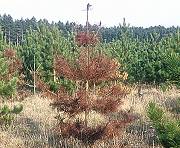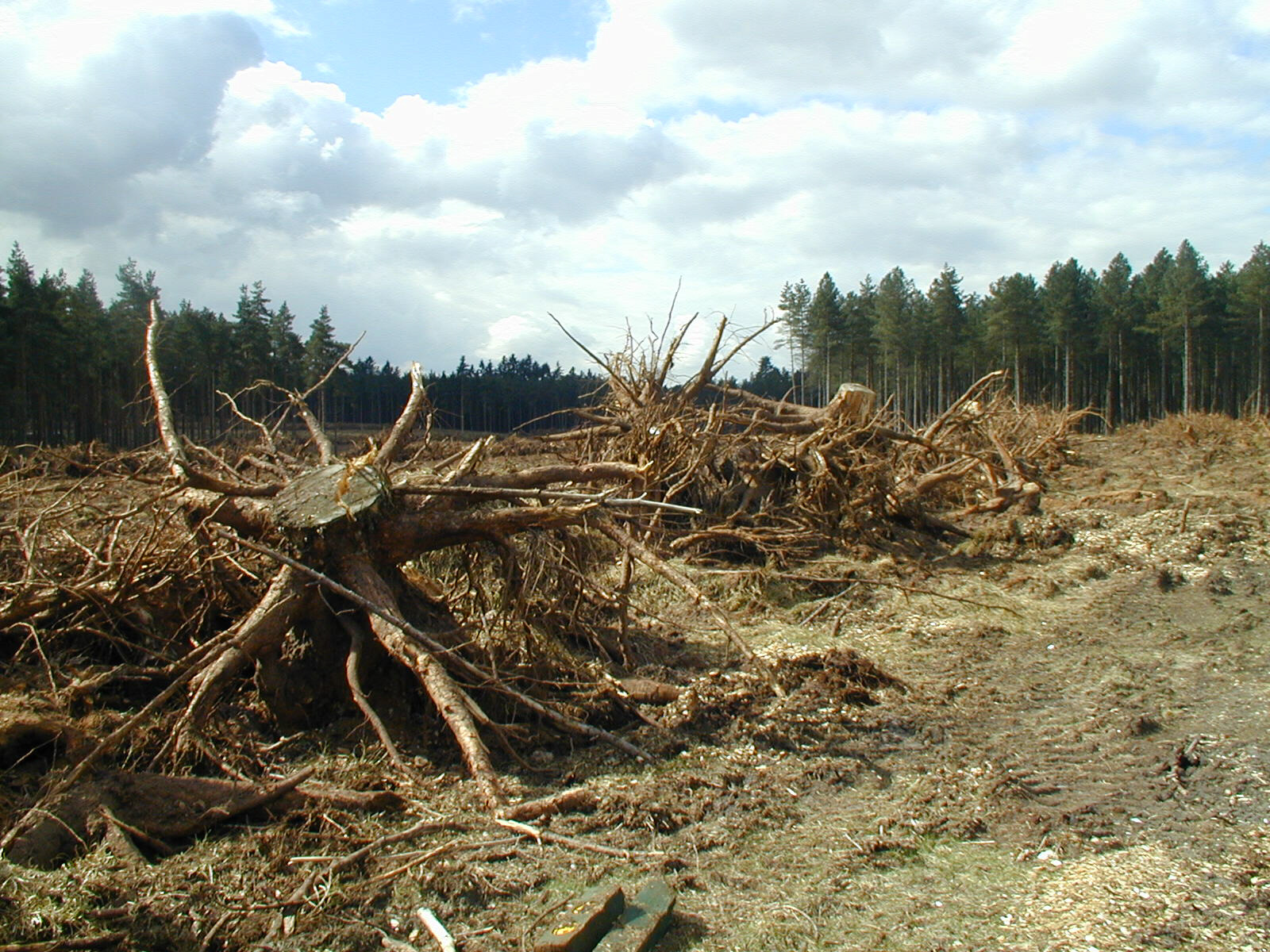Present in UK
Not notifiable – see ‘Report a Sighting’ below
Scientific name of causal agent – Heterobasidion annosum

Conifer root and butt rot is a disease of many species of conifer trees, and is one of the most serious diseases of commercial conifer forestry.
It is caused by the basidiomycete fungus Heterobasidion annosum (H. annosum), which attacks the roots, butts and stems (trunks). The fungus previously had the scientific name Fomes annosus.
The fungus is present in the UK and continental Europe.
There are high levels of H. annosum infection in continental Europe, but the problem is less severe in the UK. It affects up to 25 per cent of Norway spruce (Picea abies) in Scandinavia, and causes losses of hundreds of millions of euros every year.
The disease is less prevalent in the UK because our conifer forests have been intensively managed for only a relatively short period (fewer than 200 years) compared with those in continental Europe. H. annosum spores are therefore relatively infrequent, so infection levels remain lower than in Europe.
There is a risk that spore levels in the UK’s conifer forests might increase over time, causing more trees to become affected. Experience in continental Europe has shown that the fungus can cause serious economic losses to timber growers and the businesses which depend on them. The UK’s softwood forests support investment of hundreds of millions of pounds in hundreds of businesses employing thousands of people in planting, managing and harvesting the trees, and hauling and processing the timber. These benefits would be put at risk if there were no effective control of the fungus.
The landscape and biodiversity benefits of our conifer forests would also be put at risk, particularly those of our native Scots pine (Pinus sylvestris).

The fungus colonises tree stumps left after recent thinning or clear-cutting operations.
Conifer root and butt rot is most likely to occur on commercial forestry sites, whose managers are trained to recognise and manage it. We therefore do not require reports of suspected sightings from members of the public.
The risk of infection varies with soil type, climate and forest management regimes. In all cases, however, the current standard treatment involves prophylactic (preventative) chemical and / or biological treatment. This involves spraying the treatment product on to the tree stump surfaces soon after the trees have been felled to kill any developing spores and prevent them spreading the infection to nearby standing trees.
The usual biological treatment product is PG Suspension, which is used to apply Phlebiopsis gigantea. This is a harmless saprotrophic basidiomycete fungus which reliably out-competes H. annosum to colonise the freshly cut stumps.
The usual chemical treatment product is urea.
Removing stumps (below) is another means of preventative control.

Given the importance of coniferous forests to the UK’s domestic softwood timber industry, research into cost-effective and environmentally benign ways of managing conifer root and butt rot is a priority for us. Our research programme is therefore:
Chemical stump treatment prevents H. annosum infection, and it accounts for 90 per cent of all plant protection product use in British forestry. However, in an effort to minimise the use of chemical treatments, we have been conducting field trials of two non-chemical treatments:
Find out more about our research on non-chemical protection against conifer root and butt rot.